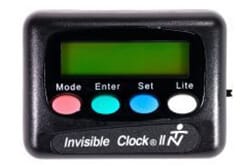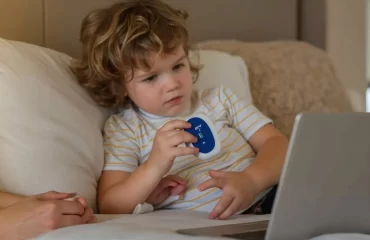The back-to-school season is a time of new beginnings. Fresh backpacks are packed, new routines are established, and a sense of structure returns to the household. For parents of children who wet the bed, this annual reset presents a unique and powerful opportunity. While managing bedwetting can feel like a daunting task amidst the hustle and bustle of a new school year, the built-in consistency of a school schedule provides the perfect framework for a lasting solution. This isn’t just another item to add to your to-do list; it’s a chance to embark on a positive, empowering journey with your child. By using a Bedwetting Alarm, you can transform the challenge of bedwetting into a project that builds confidence, fosters independence, and leads to dry nights for good. This practical guide is your back-to-school checklist for navigating the process and setting your child up for success before the first school bell rings.
The Back-to-School Advantage: Routine is Your Greatest Ally
One of the biggest keys to successfully overcoming bedwetting with an alarm is consistency. The human brain, especially a child’s developing brain, thrives on routine. The back-to-school season naturally enforces this. Consistent bedtimes and wake-up times create a predictable rhythm for the body’s internal clock. This regularity is the secret ingredient for effective alarm training. When the body is in a stable sleep-wake cycle, it becomes much more receptive to the conditioning process that the alarm facilitates. Rather than viewing the alarm treatment as an added stressor, frame it as a positive new habit that aligns perfectly with the other healthy routines you’re establishing for the school year. This is the moment to teach your child one of the most valuable skills they can learn: how to listen to their own body. By integrating the alarm into this new schedule, you are not just hoping to stop bedwetting; you are creating a structured plan to achieve it.
The Pre-Launch Checklist: Preparing for a Successful Mission
Before the first night of alarm training, a little preparation can go a long way. Setting the stage properly ensures that both you and your child feel ready, confident, and motivated for the journey ahead.
Step 1: The Team Talk – Starting the Conversation
The first and most crucial step is how you talk to your child about the alarm. This conversation should be framed with positivity and empowerment. It’s essential that your child sees the alarm not as a punishment for wet nights, but as a cool gadget or a special tool that will help their body learn a new skill. Explain it in simple terms: “Your brain and your bladder need a better way to talk to each other while you’re asleep, and this alarm is like a special phone that helps them connect.” Emphasize that this is a team effort. Let them know you’ll be there to support them, whether it’s helping them wake up, changing sheets, or just giving them a high-five for a dry night. For younger children, you can make it a fun “mission.” For older kids and teens, the conversation can be more direct, focusing on the independence and freedom they will gain. The goal is to get their buy-in and make them an active participant in their own success. There is a wide variety of bedwetting alarms for children and bedwetting alarms for teens designed to suit their specific needs and comfort levels.
Step 2: Setting Up for Success – The Nightly Routine
Once you have your alarm, integrate it seamlessly into your child’s bedtime routine. This should happen at the same time every night, just like brushing their teeth. Walk them through the process of attaching the sensor and putting on the alarm. Let them practice turning it off, so they feel familiar and in control. Prepare the bedroom for a smooth middle-of-the-night response. Lay out a clean pair of pajamas and fresh underwear. Keep a nightlight on in the hallway and bathroom. You may even want to have a second set of sheets and a waterproof mattress protector nearby to make any necessary changes quick and painless. The goal is to minimize disruption and frustration, for both you and your child. By making the alarm a normal, expected part of the nightly routine, you remove any anxiety or stigma associated with it.
Navigating the Night: A Parent’s Role in the Treatment Process
The first few weeks of using the alarm are a critical learning period. This is where your support and patience are most vital, especially if you have a child who is a very deep sleeper.
Managing the Logistics: Laundry and Deep Sleepers
During a busy school week, the thought of extra laundry and middle-of-the-night wake-ups can be daunting. However, with a little planning, it is entirely manageable. Having waterproof mattress pads is a non-negotiable part of this process. They protect the mattress and make clean-up significantly easier. If your child is a particularly deep sleeper, you will likely need to wake up with them when the alarm goes off. It is important that the child, not the parent, is the one to turn off the alarm and walk to the bathroom. This is a crucial part of the conditioning process. You are there as their support crew, not to do the work for them. There are specific bedwetting alarms for Deep Sleepers that offer stronger vibrations and louder sounds to help rouse them from sleep. Remember, the initial phase of waking up is temporary. As their brain learns, they will begin to wake on their own, and eventually, they will sleep through the night dry.
The Power of Consistency
Consistency is the engine that drives the success of the bedwetting alarm treatment. Skipping nights, especially on weekends, can confuse the brain and prolong the learning process. The structured schedule of the school week is your best friend here. Sticking to the routine every single night reinforces the connection between the full bladder and the need to wake up. Keep a progress chart and celebrate the victories. Every night the alarm sounds and they wake up is a success. Every dry night is a major milestone. Positive reinforcement will keep your child motivated and engaged. This consistent effort is what leads to a permanent solution. While the journey may have its challenges, the payoff is a child who is not only dry but also brimming with a new sense of accomplishment and self-confidence, ready to take on the school year without the secret burden of bedwetting. The same principles of consistency and positive reinforcement apply to all ages and needs, from young children to adults, and there are specialized bedwetting alarms for adults and even bedwetting alarms for Special Needs to ensure everyone has a path to success.
Related Articles
Bedwetting Alarms vs. Medication: Which Offers a True, Long-Lasting Results?
Why Pediatricians & Urologists Recommend Bedwetting Alarms First
Bedwetting Alarms: The Proven Solution for Nighttime Dryness







 Our #1 Top SellerIdeal for Daily Use
Our #1 Top SellerIdeal for Daily Use Premium Quality BeddingSoft and Comfortable
Premium Quality BeddingSoft and Comfortable Premium Quality BeddingLarge Urine Absorption
Premium Quality BeddingLarge Urine Absorption AFFORDABLE PRICECHANGE DAILY AS NEEDED
AFFORDABLE PRICECHANGE DAILY AS NEEDED
 Sleek, Stylish and Affordable Watch
Sleek, Stylish and Affordable Watch Multi-Function Watch with Numerous Features
Multi-Function Watch with Numerous Features Recommended watch for teens and adults
Recommended watch for teens and adults Perfect for medication and other reminders
Perfect for medication and other reminders











